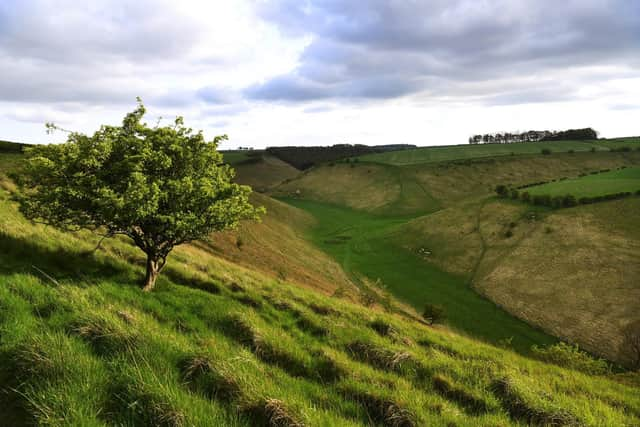Yorkshire Wolds Way earthwork looks idyllc as trail celebrates 40th year
The superb spiral earthwork Waves and Time on the National Trail can be seen in the picture.
It is at the junction of three characteristic Wolds dry valleys – Worm Dale, Thixendale and Bradeham Dale.


Advertisement
Hide AdAdvertisement
Hide AdThe earthwork in the shape of a large spiral is at the base of the valley, having been formed by excavating a curving trough to a depth of around 40cm. The earth was then used to form the curving mound to a height of roughly 50cm, says Visit East Yorkshire.
The spiral mound, 90cm from its base to its top, is around 40 metres in diameter with “arms” linking to a dew pond on the far side of the valley.
The Yorkshire Wolds Way itself is celebrating its 40th year.
The trail is a 79-mile (127 km) walking route in the chalk landscape of the Yorkshire Wolds.
Advertisement
Hide AdAdvertisement
Hide AdIt goes through “some of the most tranquil and gentle countryside in England,” according to the National Trail organisation.
From the banks of the Humber estuary, along wooded slopes and through serene dry valleys, the walk ascends gently on to the tops of the rolling hills where on a clear day views are magnificent. Descending from the northern escarpment, the final section of the Way finishes on the dramatic headland of Filey Brigg.
On the walk, visitors will encounter chalk shaped over millions of years into a combination of hidden and green dry chalk valleys and wide open field tops, where the views stretch out for miles.
It also includes the parkland of Londesborough and the deserted medieval village of Wharram Percy, named after the great northern lords who owned much of the land in the 12th and 13th centuries.
Advertisement
Hide AdAdvertisement
Hide AdThe Black Death, sheep farming and isolation reduced the population until the last house was abandoned in 1500, says the National Trail organisation.
Wildlife is a big draw too, with hares a familiar sight on the ground and red kites in the sky.
Technical details: Nikon D5 camera, 24-70mm lens, 1/200th second at f10, ISO 400.
Picture: Jonathan Gawthorpe. Words: John Blow.
